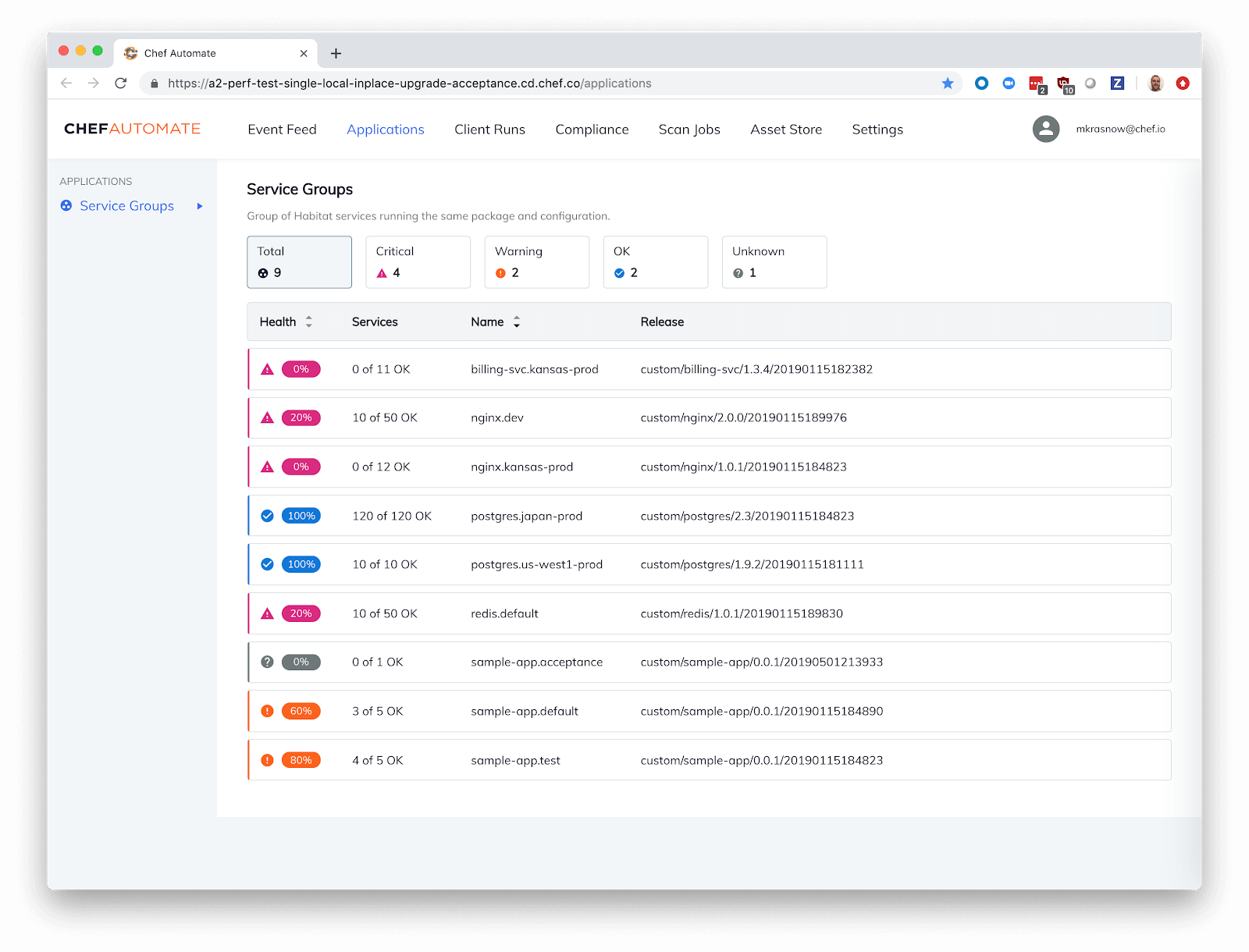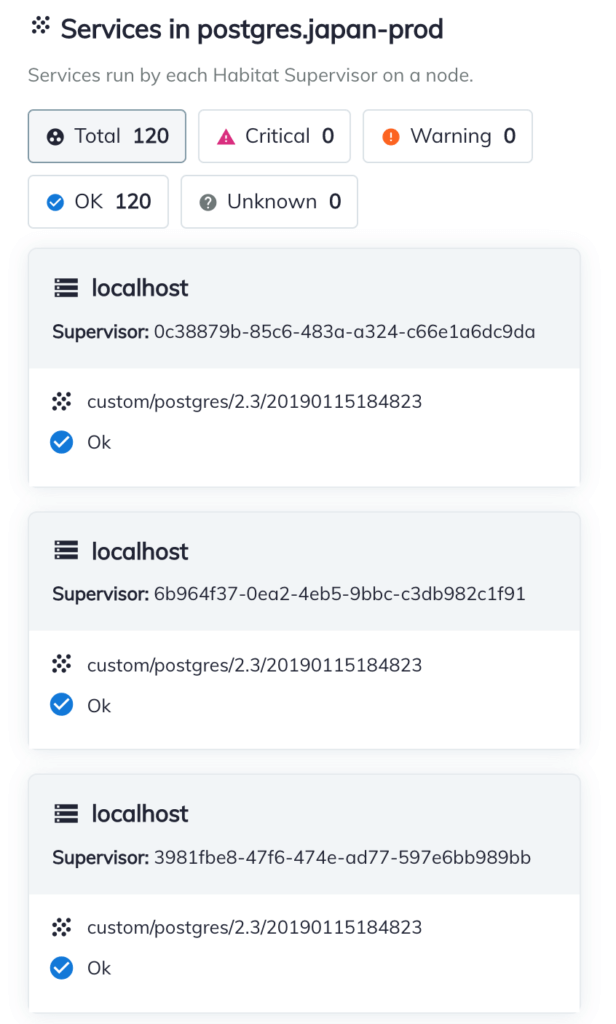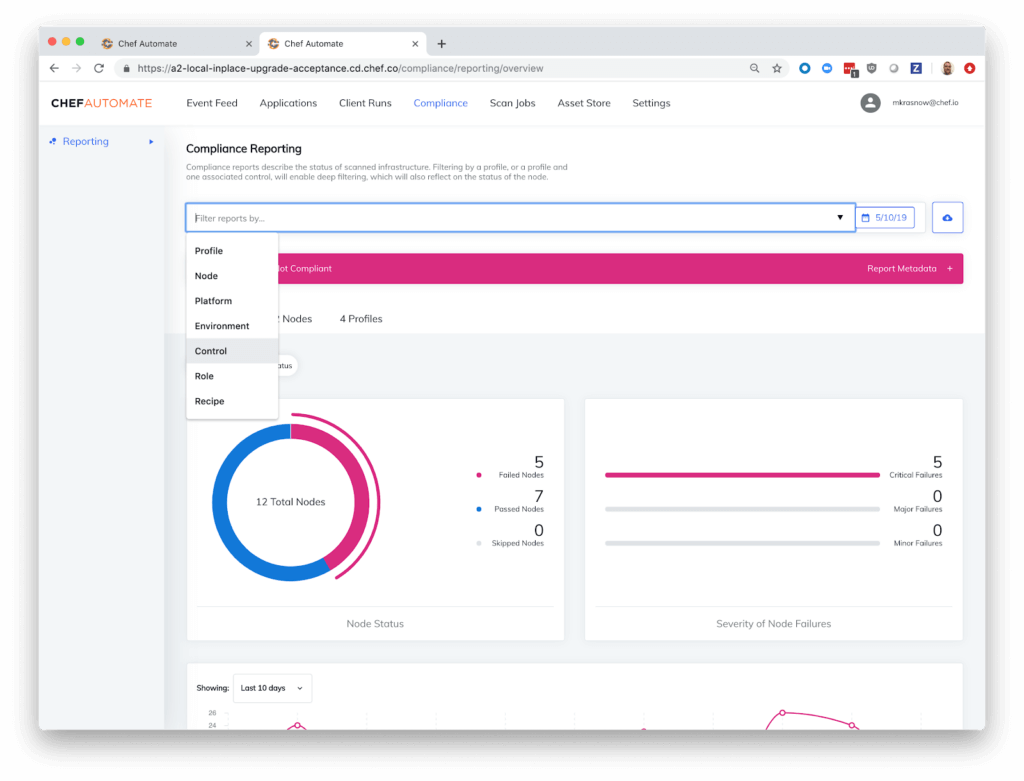These are exciting and often daunting times for IT organizations. The growth and competitiveness of every enterprise depends on digital transformation, but lurking below the buzzword is a complex tangle of manual effort and blind hope. Today Chef announced a host of product enhancements to the Chef Enterprise Automation Stack to make it easier for IT teams to overcome the barriers between them and digital success.
Three enhancements in particular promise to help. First, new dashboards offer greater visibility of the application lifecycle and simplified troubleshooting for infrastructure and application health. Second, new effortless infrastructure capabilities simplify infrastructure and security automation, allowing easy customization to enterprise-specific needs. And third, a new migration accelerator makes it easier than ever to re-platform legacy applications to the cloud.
DevOps dashboards for wider visibility and clearer insights
Expanding application portfolios are increasingly difficult to manage over their lifetimes. Operations teams must contend with a variety of applications, both new and old, and updates and changes to any one of these can cause unexpected problems. With the new application operations dashboard in Chef Automate, operations teams gain comprehensive and customizable visibility into the health of the services that make up the application. Now it’s easier to understand what’s degrading the health of your applications so you can keep them running smoothly.


Additionally, more powerful filtering and reporting in Chef Automate offers the ability to see how individual security and compliance controls are performing across a heterogeneous estate. This helps simplify compliance reporting and reduce the manual effort needed to address ad hoc requests. For instance, answering an auditor’s request for verification against a specific compliance control can now be done in just a few clicks.


Making infrastructure and security automation effortless
In an increasingly complex IT landscape, configuring and securing infrastructure is difficult, particularly when done at scale. Chef provides powerful tools to address the most difficult enterprise scenarios, and with new Effortless Infrastructure capabilities, makes doing so easier than ever. Chef Infra and Chef InSpec can now take advantage of the application lifecycle management capabilities of Chef Habitat to simplify their deployment, management, and upgrades.
Extending this effortless pattern, Chef is making it possible to tune profiles and hardening cookbooks by simply turning on or off specific controls. In this way, organizations can customize infrastructure hardening to their individual needs, without having to write code. That reduces the skills and time required to deliver and maintain secure infrastructure.
Accelerating application migration
Business value lives in applications, and most enterprises maintain a large number of applications on older platforms. Some, like Windows Server 2008, are nearing their end of support date, and moving off those platforms is a priority, both in terms of risk and financial impact. To help, Chef announced a new EAS Migration Accelerator for Windows to scan existing .NET applications running on IIS to discover configuration and dependency details, then package the information as code. It provides a shortcut to build application packages in Chef Habitat in order to make applications portable. As a result, organizations can free themselves from older platforms and modernize how those applications are managed in any cloud or on prem environment.
If you are interested in learning more, or would like help assessing your readiness for application modernization or the effortless infrastructure pattern, be sure to visit https://www.chef.io/campaigns/eas-migration-assessment.

